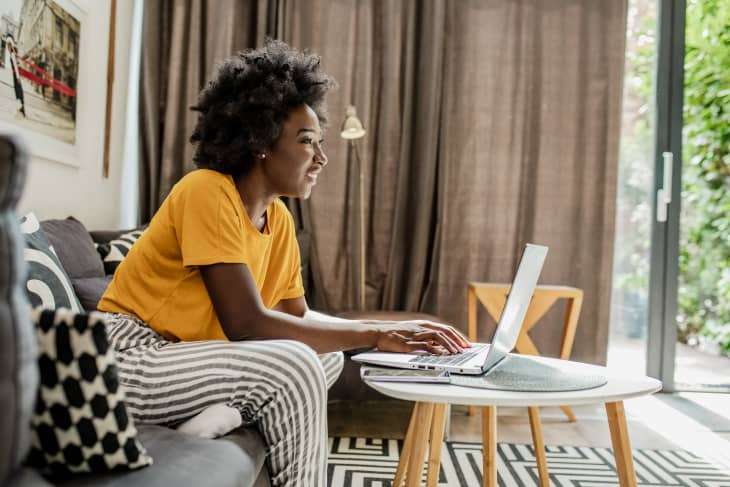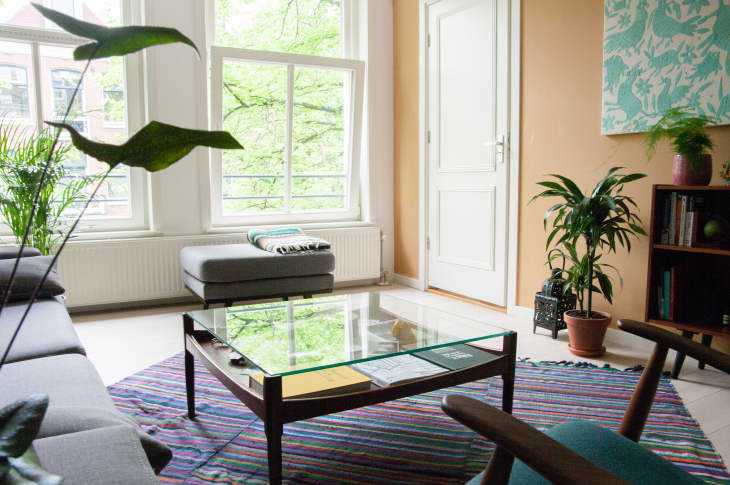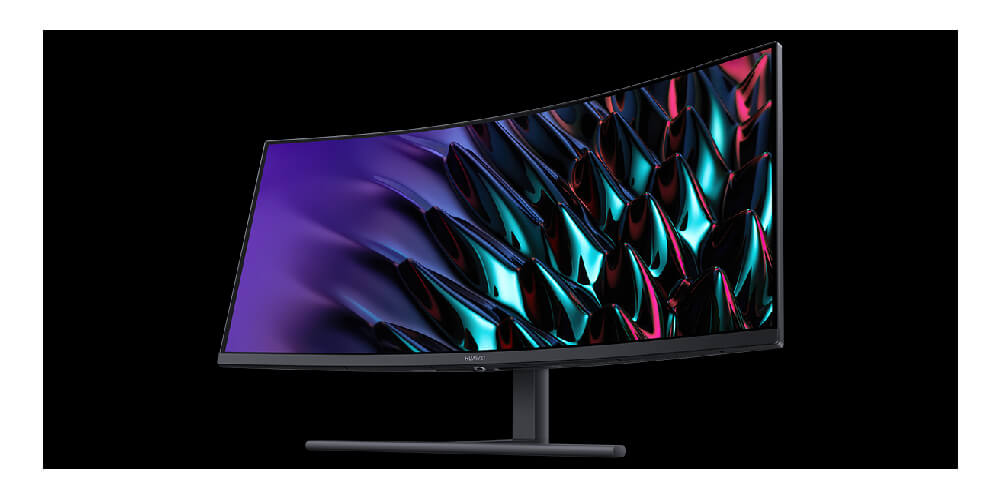A few years after reading Marie Kondo’s “The Life-Changing Magic of Tidying Up” and six months into the pandemic, I finally accepted it: I had too much stuff. I was getting ready to move my things into a storage unit as the realization hit that I would be paying a premium to leave things to collect dust (literally) in a storage unit after years of collecting dust (figuratively) in my apartment. Why?
So I organized my things into piles: things for storage, mostly sentimental items or things that were too nice or useful to part with; things to donate, items that were still in great shape but replaceable, should there be a need down the line; things to throw away, broken items, mysterious missing pieces, and items that would be unsanitary to share. Then there was the other pile; things that were still in great shape, but which I didn’t feel were worth storing, and would definitely not make it through a donation center in one piece.
My ice cream machine was in that last pile. I inherited it from my brother and loved it, for a time. Eventually, it became too annoying to run out for some heavy cream, and I stopped using it. But the three-piece contraption — each piece crucial for use — would surely get separated if left in the Goodwill bin. This hardly-used machine would end up useless. That’s when a friend told me about the Buy Nothing Project , a network of digital neighborhood groups where you could give away things you no longer need to neighbors who want them. I promptly joined my local group, posted the ice cream machine, and not long after a neighbor named Valerie came by to pick it up. I was relieved.
Throughout the pandemic, as we took stock of the things in our lives, a growing number of people turned to their neighbors. As more and more people retrofitted their homes to do more, they also filled bags upon bags of things they no longer used for donation centers , many of which, for a few months in 2020, had halted donations due to concerns over the novel coronavirus. So, they turned to the internet. According to a spokesperson for the company, neighborhood app Nextdoor has seen an 80 percent increase in monthly listings on their For Sale and Free tabs, where members can buy and sell their household items to others in their community, since the beginning of 2020. Of those items, 25 percent are listed for free — this is almost double the amount of free listings there were in the beginning of 2020. Rather than trying to make an easy dollar off of their used goods, many people are simply trying to get rid of things, without sending it to the dump.
“As much as there’s need, there’s so much abundance,” Los Angeles local Alicia Mitchell tells Apartment Therapy. “There’s no reason why we can’t help each other.”
Following this simple ideal generates a community-oriented grassroots approach to freely giving away things you no longer need or asking for things you currently need. Neighborhood gifting groups like those supported by the Buy Nothing Project have continued to gain traction throughout the pandemic. In these hyperlocal groups, which generally exist on Facebook, people post their “asks” and “gives” — things they need or things they’re giving away — and neighbors reply either by offering the asked item or claiming the given item. The cardinal rule of Buy Nothing is no trading, bartering, or selling. All items are to be valued equally, which means no value is placed on any item at all.
How a Himalayan Headwoman Inspired a Global Movement
The idea of helping your neighbor if they need something you have is an ancient one. And as a formal entity, Buy Nothing long predates the pandemic. Two friends, Rebecca Rockefeller and Liesl Clark, started their project in 2013 on Bainbridge Island, Washington, after a series of events pushed them to reconcile the amount of plastic trash on their local beaches, unforeseen needs for household items, and an introduction to a remote Himalayan community called Samdzong with a thriving gift economy.
As Clark describes in their book, The Buy Nothing, Get Everything Plan , she (along with her family and a team of scientists) had the opportunity to explore ancient caves in the mountains on the Nepal-Tibet border. Samdzong is a small village about a half a mile away from some of the caves the team explored. Living in a highly remote area — roughly a four-hour walk from the nearest road — villagers largely rely on their community to get the things they need, trading goods and services with each other in a “nearly egalitarian, mostly cash-free economy that connects families in a web of interdependence.” As the story goes, when they were getting ready to return home, Clark had been getting ready to leave behind five bags of clothing for families in the community as a show of gratitude for their hospitality. She was separating the clothing into piles based on family makeup — kids’ clothes for the families with kids, adult clothes for the adults — when the mukhia, the headwoman, suggested she separate the clothing into 17 equal piles for the 17 households.
“The children’s clothing in the old woman’s pile,” Clark recalls the mukhia explaining, “ensures this village elder will have something to give. The health of our local village is dependent upon each family receiving the same gifts, so they can, in turn, be both giver and receiver.”
Pulling inspiration from an economic model so unlike our American consumerism, Clark and Rockefeller started inviting their friends to the first Buy Nothing group, then their friends invited friends. “Within hours we had 300 people,” Clark tells Apartment Therapy. Soon after their community group started, the movement spread to nearby Seattle, and from there to over 6,000 other “official” communities around the world. While the Buy Nothing umbrella network is vast, Rockefeller and Clark have also made all their start-up materials available on the project’s website. There are potentially countless additional “no-buy” groups that operate in the spirit of Buy Nothing, as well as similar no-buy projects, like Freecycle .
The project’s growth has continued steadily throughout the pandemic, an upward trend Clark attributes to two things: our tanked economy and our desire for connection. “I think people are just needing to find new ways to not spend as much money,” she says, citing mass layoffs and lost wages as driving motivators to not only shop frugally, but to not technically buy anything at all. “That I think was an eye-opener for people, while at the same time, the side benefit, they were literally meeting their next-door neighbors, even if it was virtually. We’re all coming to know each other through our stuff.”

The Community of “No-Buy” Groups
Cheryl Klein, a two-year member of two different “no-buy” groups in her Brooklyn neighborhood (one Buy Nothing and one unaffiliated), calls her groups “essential and incredibly useful parts of my time as a mother.” Through the groups, she’s gotten and passed along pregnancy gear, a crib, a high chair, a baby gym, a dresser, baby clothes, and more items crucial to parenthood. (Many baby items are built to last through multiple kids, but it’s important to check the manufacturers’ notes and warranties to be sure before giving them away or taking them from someone whose family has outgrown them. You can also look for third-party safety certifications from organizations like the Juvenile Products Manufacturers Association .) Klein is currently getting ready to pass along the baby gates she scored through the group when her baby was becoming mobile. “That’s one more thing that I didn’t have to spend $100 on, and now somebody else won’t have to either,” she says. “In these economic times, that’s a great thing.”
As Clark suspected, Klein has also come to appreciate the friendly faces around her neighborhood. She finds herself receiving and giving items to the same people repeatedly — those with children in development stages just before or just after hers — and recognizing the story of their stuff. Last April, for example, Klein received some sourdough starter through one of her groups. Later, that same neighbor who provided the starter picked up an ovulation kit from Klein, and in the months following, posted an ask for pregnancy clothes. Especially during the pandemic, Klein says, “it’s nice to see the cycle of people’s lives and the way things are shifting around.” For her part, Klein recently decided that she now had too much sourdough starter, which she’d kept alive over the past year, and passed some along to others in a group.
On the other side of the country, Mitchell has found a sense of community through her Buy Nothing group that she hadn’t found in the eight years since moving to the city. She originally joined the group because she was low on cash and read an article about groups where she could source things she needed from her community for free, but her involvement reached a turning point when she and her daughter both came down with a terrible flu. With family scattered around the country and friends far across town, Mitchell put out an ask for soup. Her neighbors came through in a big way. “It really was the first time since I’d moved to L.A. that I felt seen and like people cared about me and wanted to make sure that my kid and I had crackers and cough drops, and that we were ok,” she says.
Since then, Mitchell has become an admin of her local group and guided it through a “sprout,” which is the process of splitting a neighborhood group into two new groups in order to prevent the group from getting too big. The theory is, as Mitchell describes it, that when the groups have too many members, they become unmanageable. People start taking advantage of the group, taking everything they can regardless of need. “At that bigger level when it becomes less neighborly and less tribal, it’s like Craigslist. It’s just grabbing stuff,” she says.
Less About Stuff, and More About Community
The community aspect of a “no-buy” group is crucial, as it “raises the potential of its effectiveness,” says Maurie Cohen, a professor at New Jersey Institute of Technology and an expert in the field of sustainable consumption. Seeing neighbors participate in “no-buy” groups encourages people to take part in the process themselves.
Chayanee Chinthrajah watched this awakening in her own neighborhood after she moved to the New Jersey suburbs from Jersey City. Bummed about leaving her Buy Nothing group behind, she reached out to the Buy Nothing organization about starting a local group in her new town of Livingston this past September. Coincidentally, another neighbor, Anna Shukeylo had also expressed interest in starting a group. The two were paired up and got to work on the first Buy Nothing group in their area.
According to Chinthrajah, starting a group mid-pandemic wasn’t a problem at all — it’s easy to schedule contactless pick-ups in the suburbs — but the concept of the group felt foreign. “People weren’t used to the idea of giving away freely in a group,” she recalls. It wasn’t until she started modeling the typical group behaviors by posting a series of gives that more people caught on and joined in. Now, just six months after launching, their group is 1,600 people strong, and multiple additional groups have popped up in their surrounding towns. The group’s gives have included nine baby grand pianos, high-end strollers, baby Ugg boots, and, now that it’s gardening season, trees, plants, and seeds.
Of course, not all gives are so extravagant. Danita B., a Los Angeles-area Buy Nothing member, has asked her group for zip ties for a project and to borrow a drill when she was hanging curtains. “I saw somebody recently ask to borrow a cat carrier,” she adds. “These are just the things that you need in your life and you just need it once, and you don’t need to buy it and take up space in your apartment.”
And then there are things you do want taking up space in your apartment. Looking around her apartment while we chatted, Danita clocked the cute rug, velvet pouf, and string wall art “that’s kooky and weird and goes with our room and I love it,” all gifted through her group.
But the real gift, she says, is being able to get rid of things without any hassle — especially without having a car. With neighborly pick-ups, she’s been able to get rid of bulky items like a dresser and bookshelf. Most recently, she was able to get rid of a clunky “dinosaur of a TV” when a neighbor said their son could use it for his video games. Another neighbor came to help move it, and “off it went to its next life!” she says.
She also wasn’t worried about any potential lost income, especially because she was in a position to purchase a new TV herself. “I would much rather someone take something I have and apply their own value to it than for me to assign it some arbitrary monetary number,” she says. “We as a community are made all the richer when we share resources and reframe the value of things.”
For Sarah Murray in Vancouver, however, the gift of her group was in the friendships she formed. Murray was new in town when she went to pick up some ceramic planters from a neighbor. They started chatting, hit it off, and became friends on Facebook, where Murray saw that the woman organized social meet-ups at a local playground. She went, met more people, heard about more local groups, and started feeling like an active member of her community. “Buy Nothing groups are fantastic because they are so generous and warm without the fanfare,” she says. “That makes you feel like part of the energy of a community, not a savior or a mooch, just part of it.”
Buying Nothing, and Changing the American Dream
With its “give freely and repeatedly” model, the “no-buy” movement is pushing people to rethink the lifespan of consumer goods. There’s no quantitative way to show whether a statistically significant dent has been made in consumption practices as a result of the movement (although Clark notes that the Buy Nothing Project is working on moving their model to a proprietary app , which she hopes can help capture these metrics), but the concept itself has value in its radicalism. Gaëlle Bargain-Darrigues, a Ph.D. student at Boston College who has been studying “no-buy” groups in the Boston area throughout the pandemic, sees the movement as culture-shifting. “It’s contributing to growing the consciousness around the impact of our consumption and the understanding of the critique of American consumerism, and that’s something that many of the participants were aware of and critical of,” she says.
Cohen puts it more frankly: “This really flies in the face of customary conceptions of the American dream.”
He attributes a portion of the rejection of traditional consumerism to the shifts in the labor market and the rise of contingent jobs and the gig economy. Without job security, people are less inclined to make major purchases and will, instead, reevaluate what they actually need and seek alternative methods of acquisition. The “no-buy” movement offers millennials and generation Z a new narrative to navigate the fact that, for the first time, the younger generations’ ability to accumulate wealth will not surpass their parents’ generation : “We don’t need to out-earn you, because we reject your non-sustainable standards of living entirely.”
Now, thanks to community efforts and mutual aid, there are ways not only to survive, but to thrive together. Intertwined with sustainability and a desire to fight the growing climate crisis is this underlying ethos: We, and only we, get to decide how we want to live, and how we want to live together.
The movement toward free, communal, continuous sharing is both a return to centuries-old traditions, as well as just one piece of a greater societal movement toward a more conscious way of life. It has faults — as Bargain-Darrigues points out, as long as “no-buy” groups are created along neighborhood lines, there will be some amount of socioeconomic disparity and exclusion — but its value is undeniable.
“I think the more you get people thinking about [consumption] issues, the bigger the chance is that a bigger change might happen,” she says. “But we have to make sure that people understand that that’s not enough. It’s good, but it’s not enough.”
Cohen notes that especially without funding, there is a limit to how much quantitative change volunteer groups like Buy Nothing will bring about. Individual behaviors surrounding our involvement with society are important, but valuable, lasting change requires political action. “They’re not individual problems,” he says. “They’re social and political problems.”
Although I knew my impact was minimal, I decided to check in on my former ice cream machine. I thought it would be nice to hear about the joy it brought to someone else and the cool recipes it’s been making. But its second life turned out to be a continuation of its first: “It’s been actually idle, ironically,” Valerie told me, citing a variation of the same problem I had run into. “I was going to make vegan ice cream but I ended up not getting the ingredients.”
In some ways, no matter where you put it, too much stuff will always be too much stuff.












